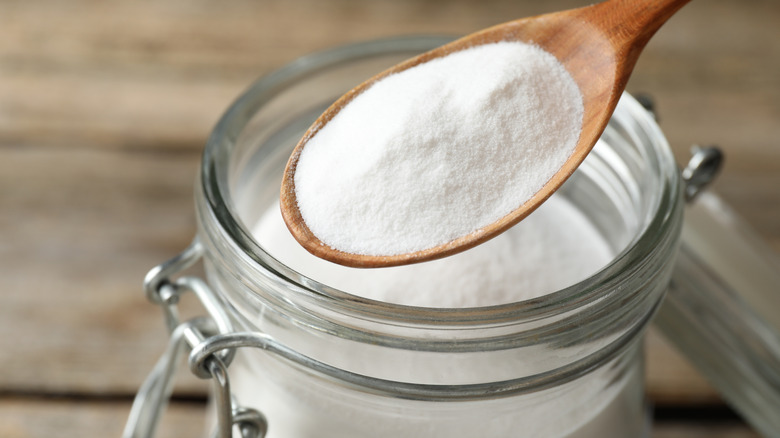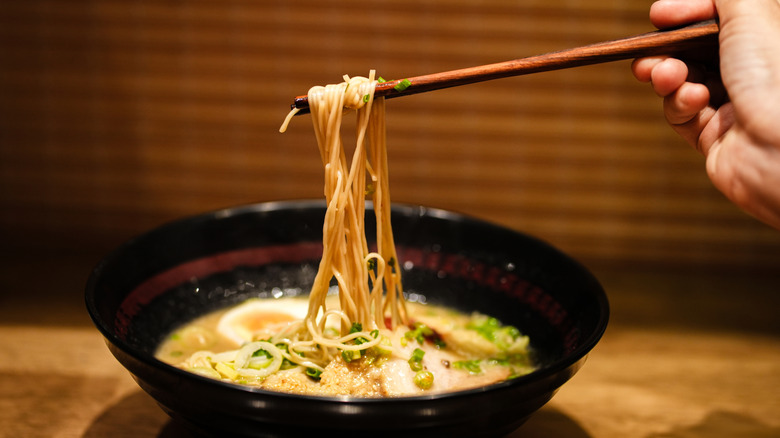The Magical Transformation Baking Soda Has On Regular Noodles
Oh, you thought stocking an endless supply of ramen noodles in your pantry was the highest degree of college-student-core you could get? Think again. Whether you're a university kid living on a budget, or just someone looking to experiment with some stove-top science, making at-home ramen noodles by cooking regular pasta in baking soda water is a fun and delicious way to use what you have to make what you want.
All you have to do to make this work is to add a small amount of baking soda — somewhere between 2 and 3 teaspoons – to a pot of boiling water. Cook your spaghetti as usual, and voila — springy, chewy, near ramen-like noodles ready to be swirled up in a bowl of broth and topped with a jammy, soy-marinated soft-boiled egg. If you're feeling extra-ambitious, you can also mix oven-baked baking soda directly into fresh-made pasta dough to achieve a closer feigning of the beloved Chinese and Japanese dish.
The alkaline science behind baking soda
It's time for your deeply buried memories of high school chemistry to shine — this transformation may look magical, but it's also very scientific. When you make traditional Chinese egg noodles or Japanese ramen noodles, the common ingredients include eggs, salt, flour, and food-grade lye water, a mixture that includes both baking soda and potassium carbonate. The reaction of the alkaline salts in lye water with the water that pasta is boiled in raises their PH, a chemical reaction that results in chewier, stretchier noodles, altering the gluten structure of the dough and giving it more elasticity.
As it turns out, doing the same with just baking soda has a similar, if not exact, result. Even better, if you bake the baking soda on a sheet first, turning it from sodium bicarbonate into sodium carbonate, increasing the strength of the alkaline substance, and making its stretching effect on your noodles even greater. If you do this, though, make sure you don't touch the baked baking soda with your bare hands, as it can be toxic to the touch. Once it's boiled into your pasta water, another chemical reaction will occur that will make the pasta safe to consume. If you want to take it to the next level, you can, of course, mix the homemade baking soda-alkaline water into flour and eggs to make homemade ramen dough.
A parting tip: Don't fill your pot of water full to the brim. When the baking soda is added, it will cause the solution to bubble — you can use your imagination to see how that might go wrong.

